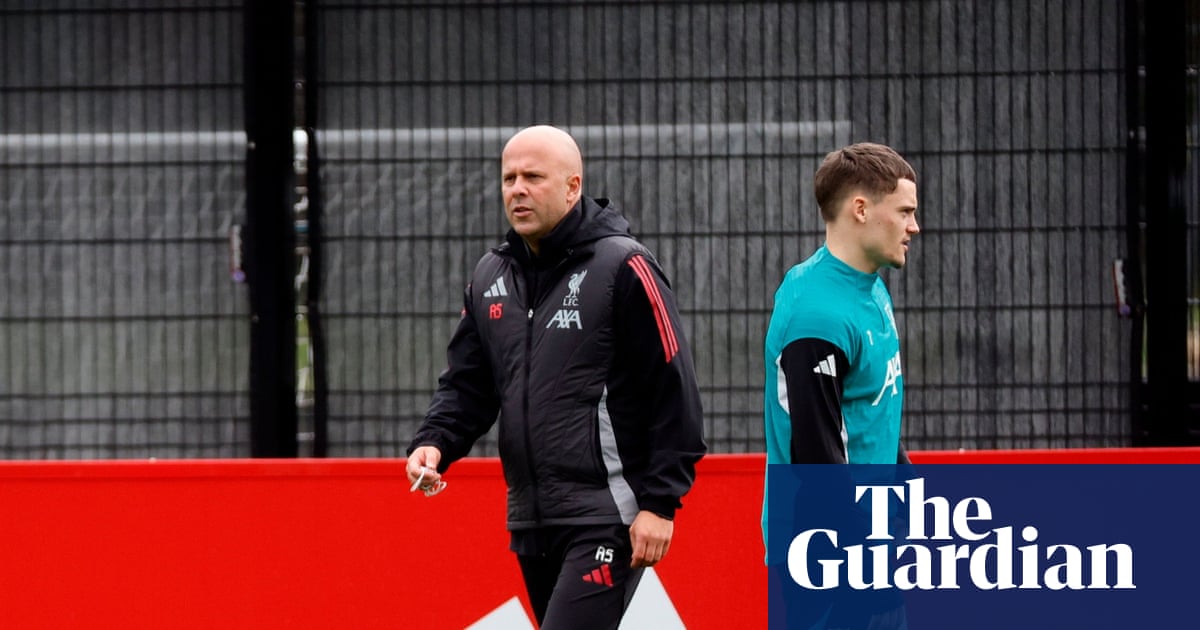England’s victory over Sweden at the women’s Euros came after one of the worst penalty shootouts in history (or at least, worst in terms of how many penalties were missed; in terms of drama, it was arguably one of the greatest ever). Of the 14 penalties taken, only five were scored. That led, predictably, to the usual tedious criticism of the women’s game and suggestions that the penalty spot should be moved closer to the goal.
Which is, of course, nonsense. Four of the five penalties that were scored were excellent, hit firmly into the corners, and the other, the kick that turned out to be the winner, was smashed sensibly and without fuss, straight down the middle by Lucy Bronze as the goalkeeper Jennifer Falk dived out of the way. Two nights later, as Germany beat France in a shootout, 12 of the 14 penalties were scored. In the Women’s Super League last season, 90.32% of penalties were converted. Nobody has used those examples to suggest moving the penalty spot further away to give goalkeepers more of a chance.
after newsletter promotion
It is one of the great fascinations of soccer that, since penalties were introduced in 1891, the spot has remained 12 yards from goal as the size and shape of the penalty area has changed. It turns out that being one-and-a-half times further from the goal than the distance between the posts creates a scenario that feels fair and has a remarkable balance. That may in part be the result of familiarity, but at almost every level of the game in the 135 years since, roughly three-quarters of penalties have been scored. That is to say, the contest between striker and goalkeeper remained constant – a relative lack of power in the striker at junior level, for instance, matched by a lack of size in the goalkeeper.
Before the Germany v France shootout on Saturday, only 12 of 29 penalties had been scored at the Euros – 41.38%. After the shootout, that percentage had risen to 57.14%. With small datasets there’s always a danger of interpreting random variations as patterns, but it did seem that panic had set in. Even before the high tension of England against Sweden, Norway’s former Ballon d’Or winner Ada Hegerberg had missed two penalties in the tournament, including, critically, in her country’s quarter-final defeat to Italy.
That, perhaps, was enough to plant a seed of doubt, which blossomed in England and Sweden’s shootout, when both sides suffered a collective loss of nerve. Anxiety is contagious and far from unknown in penalty shootouts: it happened, for instance, to Barcelona as they missed four out of four in a shootout against Steaua Bucharest in the 1986 European Cup final, and to Manchester United as they missed four out of five against Sunderland in the 2014 League Cup semi-final. The England-Sweden contagion then seemed to escape the confines of its own shootout, as Spain missed two penalties in beating Switzerland on Friday and Germany missed a penalty against France in the 90 minutes.
The shootout is perhaps the area of soccer in which psychology matters most. In the 2006 World Cup, Germany’s goalkeeper Jens Lehmann made great play of consulting notes he had scribbled on hotel notepaper and hidden in his sock before each Argentina penalty in the quarter-final. It turned out that, of the seven players he had jotted down, only two actually took penalties, but the belief he had specific knowledge was enough to unnerve Argentina, who lost the shootout 4–2.
Goalkeepers increasingly have data to help inform their decisions. Germany’s keeper on Sunday, Ann-Katrin Berger, had notes taped to her water bottle. On TV, the names of only two French players were clearly visible: Amel Majri and Alice Sombath. In both cases, Berger was advised to dive left. She did and on each occasion saved the kick. Given Berger’s notes were shown clearly several minutes before the end of normal time, could somebody have informed the French staff who could then have passed on the message for at least some of their takers to change plan? Or would asking a player to vary from their preferred method of conversion itself make them more likely to miss? That’s part of the glorious game theory of penalties.
At the moment, it feels like an arms race. VAR set goalkeepers back for a time, denying them the skip forward they habitually took as the penalty was taken. But goalkeepers have now worked out how to advance with one foot, the other remaining in contact with the goalline. As strikers have learned how to stagger their run to wait for the keeper to move first, so keepers have more data and can predict such subterfuge.
In the Premier League last season, 83.13% of penalties were converted, which is on the high side historically, but actually a drop of just over 6% from the previous season. The season before that, only 74.75% were scored. In fact, what is striking when looking at penalty conversion rates over the past three decades is how little pattern there is – from a low of 65.75% in 2001–02 to the high of the season before last, and all points in between.
Penalties are missed, penalties are scored, the taker’s cause is developed, and then the keeper’s, and sometimes panic sets in, yet somehow the proportion of penalties scored largely remains at 75-80%. Balance remains.
-
This is an extract from Soccer with Jonathan Wilson, a weekly look from the Guardian US at the game in Europe and beyond. Subscribe for free here. Have a question for Jonathan? Email [email protected], and he’ll answer the best in a future edition.

 3 months ago
110
3 months ago
110

















































